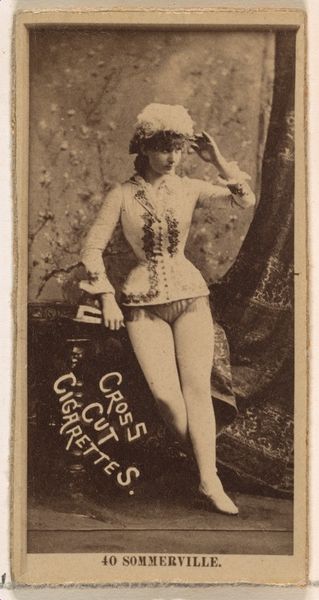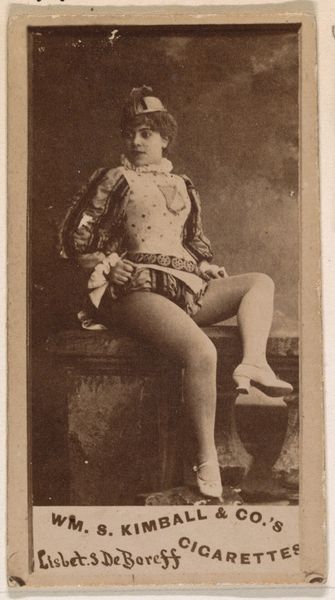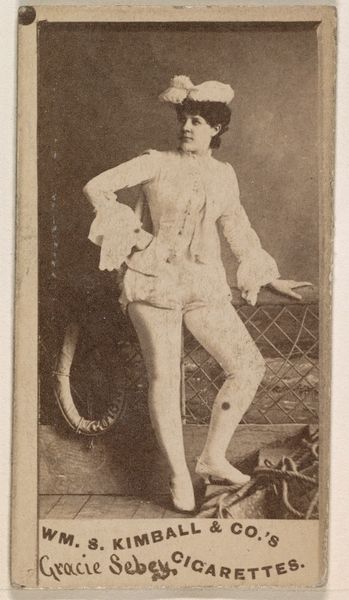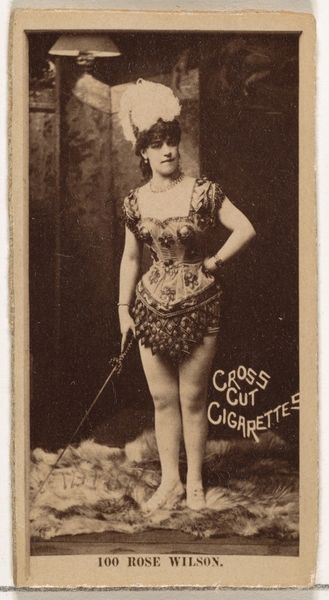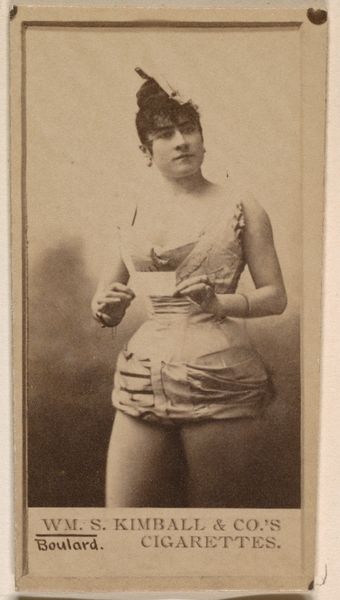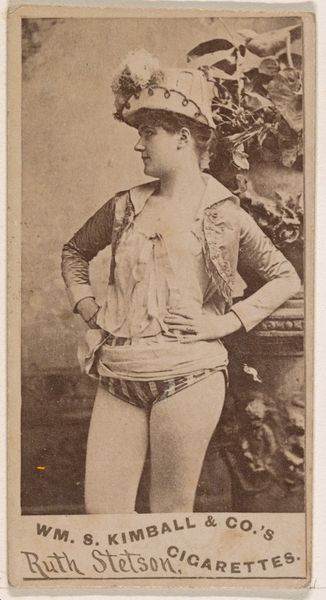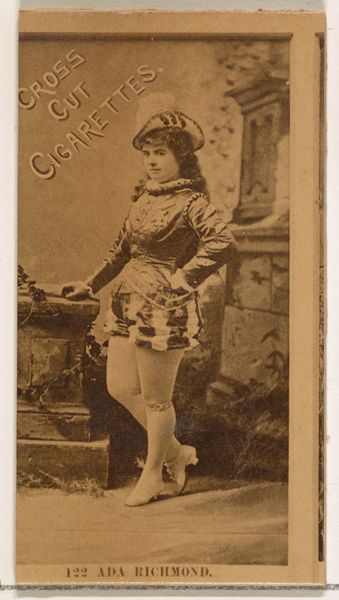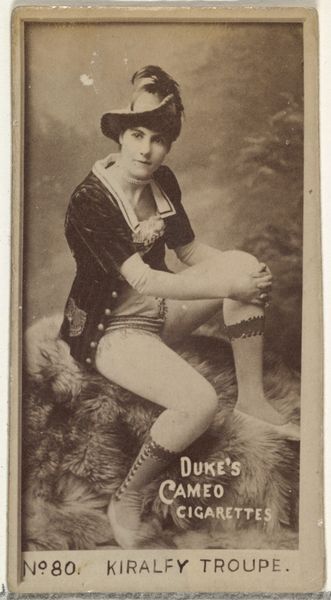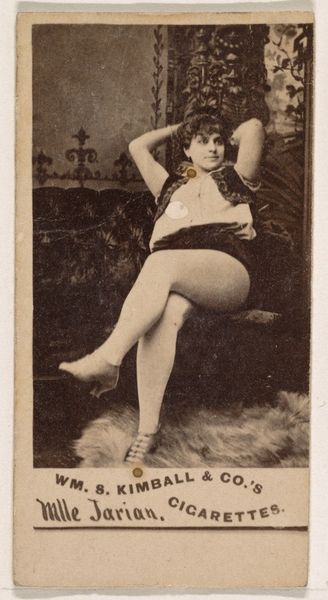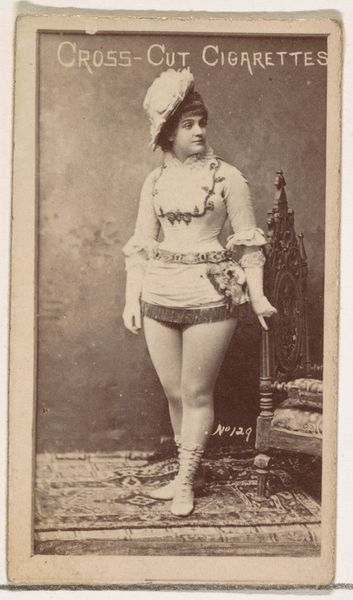
Card Number 235, Miss Giroux, from the Actors and Actresses series (N145-1) issued by Duke Sons & Co. to promote Cross Cut Cigarettes 1880s
0:00
0:00
drawing, print, photography
#
portrait
#
drawing
#
toned paper
# print
#
photography
#
portrait reference
Dimensions: Sheet: 2 1/2 × 1 3/8 in. (6.4 × 3.5 cm)
Copyright: Public Domain
Curator: The artwork before us is "Card Number 235, Miss Giroux, from the Actors and Actresses series (N145-1) issued by Duke Sons & Co. to promote Cross Cut Cigarettes," dating from the 1880s. It's a portrait, currently residing here at the Metropolitan Museum of Art. Editor: It’s fascinating. There’s an odd mixture of vulnerability and calculated allure in her pose and gaze. It makes me think about performance, commodification, and the female body. Curator: Right. These cards were mass-produced inserts within cigarette packages. The materials would have been fairly cheap - likely a photograph mechanically reproduced onto card stock. It highlights the increasing industrialization of image-making and leisure in the late 19th century. Cigarettes, photography, celebrity... Editor: Precisely. It speaks volumes about the evolving status of women during that period. We see her being simultaneously celebrated and objectified as this theatrical persona to move tobacco. How much agency did she even have? What contracts was she bound by? It invites questions about the relationship between power and performance. Curator: Indeed. This was a form of advertising dependent on image dissemination, so production costs had to remain minimal. While on first look the figure commands our attention, we mustn’t forget it existed purely for the sale of a mass-produced product. Editor: I see how her body, her image, functions as currency within the capitalist system. The portrait aesthetic lends a veneer of respectability, maybe even art, but it’s fundamentally about commerce. We need to recognize those intersecting layers of exploitation. What was it to be a performer and product-seller during that moment in history? How does she intersect with prevailing ideas about the ideal American female? Curator: Thinking about the actual printing process, the mass replication and dissemination, helps to further decode her role. The card normalizes a certain level of risqué exposure within consumer culture, too, it pushes boundaries—for profit, of course. Editor: It offers a fascinating case study of identity formation within consumer culture and reminds us to question the politics inherent in what might initially seem like a simple advertising image. The circulation of such images also served to shape desires and ideas of the gaze. Curator: Analyzing production informs how we perceive the portrait. Editor: Understanding context encourages necessary conversations. Thank you.
Comments
No comments
Be the first to comment and join the conversation on the ultimate creative platform.
